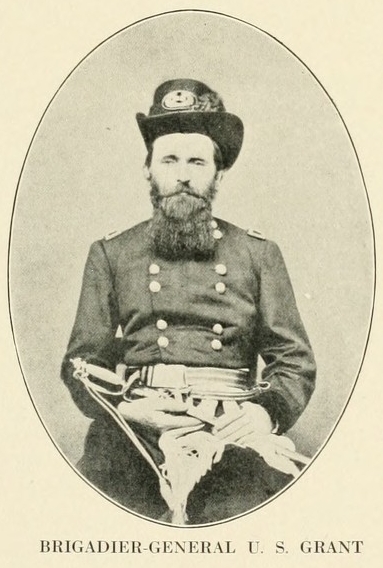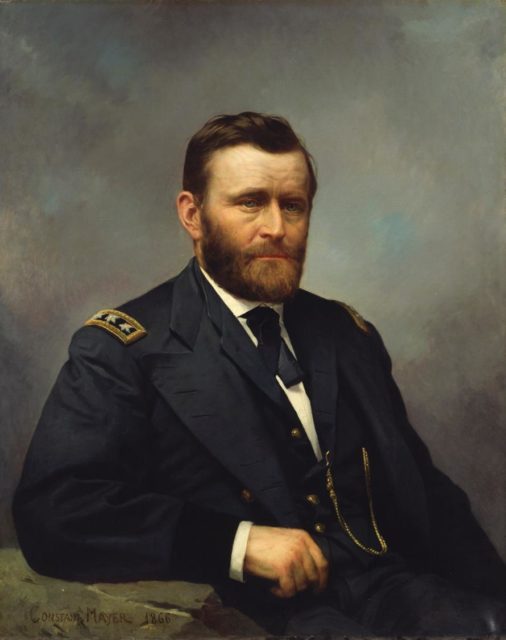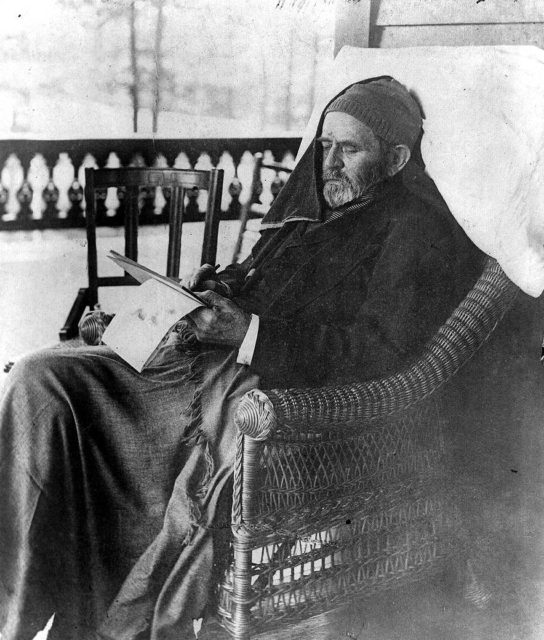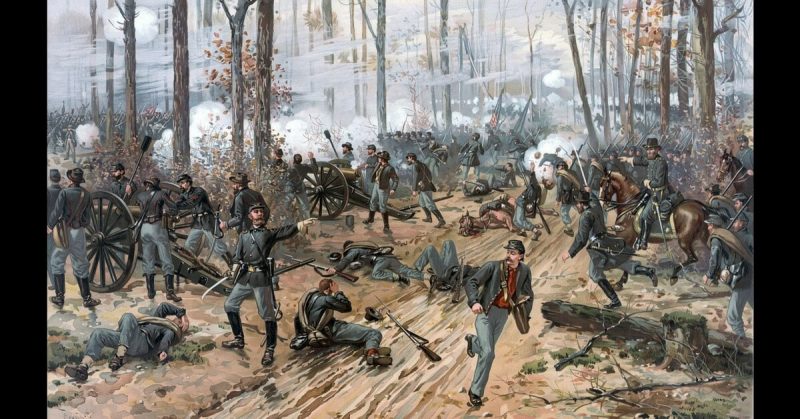Ulysses S. Grant was one of the greatest generals in American history. Under his leadership, the Union armies marched to victory through the bloody quagmire of the Civil War. His popularity as a general propelled him to become president of the country he had helped preserve. However, his career was far from a steady stream of success.
Military Education
The son of an Ohio tanner, Grant entered the military academy at West Point in 1839. It was not yet the great institution that would gain world renown. Its curriculum placed little emphasis on tactics and drill, the practical skills of command. Instead, the focus was on theory, including mathematics, science, and engineering.
It gave Grant a base of knowledge that would later prove invaluable. His enthusiasm for maps and geography was a particular asset as a general.
The Mexican War
Commissioned into the infantry, Grant was stationed on the Mexican border. At the time, the US wanted a war with Mexico but did not want to be seen as the aggressor. The Mexicans were finally provoked into declaring war in 1846 and the Americans invaded.
Grant was part of that invasion. He disapproved of the expansionist war but still fought well. He took over command of a company and led it in an attack. He volunteered for a cavalry charge and was mentioned in despatches for his part in the capture of Mexico City.

A Flagging Career
The Mexican War was disillusioning for Grant and his experiences afterward even more so. Posted far from home and his wife Julia, he became miserable and developed a complicated relationship with alcohol. He resigned his commission, leaving the army as a captain to be with Julia.
As a civilian, Grant failed at every career he turned his hand to. His attempt at farming produced poor crops. Despite his education, he could not get a job as an engineer. He failed as a debt collector and as a clerk.
By the time the Civil War broke out in 1861, Grant was a 39-year-old father of four with barely a penny to his name.
Return to Arms
It was a war Grant believed in. Its aim was to preserve a democratic republic, not corrupt it through seizing foreign territory.
In mid-April, Grant was elected chairman of a meeting to recruit a volunteer company in Galena, Illinois. The initial volunteer position propelled him back into military life. West Point graduates were a valuable resource in a nation mobilizing troops on an unprecedented scale; even a graduate as unremarkable as Grant. Thanks to the influence of Illinois Senator Elihu Washburne, he was soon promoted to a position of command.

The War in the West
Grant led troops in the western theater of the war. A master of maps and familiar with the region, he got to grips with advancing through Confederate territory around the Mississippi. Sticking to rivers to provide supply lines, he launched a series of successful attacks against the Confederates.
It led to the Battle of Shiloh in April 1862. Caught in a surprise attack by the Confederates on the banks of the Tennessee, Grant rushed to rally his forces. It was by far the most costly battle of the war up until that time. One that exhausted both armies but ultimately ended in victory for Grant.
Vicksburg
In 1863, Grant advanced on the strategically vital Confederate stronghold of Vicksburg.
During the campaign, he began taking a harsher approach to Confederate property. Local fighting in the west had already blurred the line between soldiers and civilians. On top of that, Grant realized that if he fed his army from the land, he could detach himself from the limits of the river supply system. He began a strategy of raiding, both for punishment and for supplies.
The campaign climaxed at Vicksburg. After allowing his men to exhaust themselves in initial futile assaults, Grant settled in for a siege that led to the town’s surrender.

General-in-Chief of a Total War
In March 1864, President Lincoln promoted Grant to overall head of the Union army. He coordinated the strategy of the military, which was starting to close in on the Confederacy.
Grant brought his western raiding tactics to the east, consciously developing a strategy of total war. The Union army was encouraged to live off the land. They caused destruction as they went undermining the Confederacy’s infrastructure and the morale of its citizens.
Overland and Victory
While his commanders advanced into the south, Grant took on Lee, the Confederacy’s leading general, in the Overland Campaign in Virginia. Both sides suffered severe losses but it resulted in a strategic victory that forced the Confederates into sieges at Richmond and Petersburg. Through a mixture of maneuver and bloody attacks, Grant whittled away at Lee’s ability to fight.
Eventually, Grant corned Lee at Appomattox Courthouse. The outnumbered Confederates, already suffering from desertions and short supplies, were decisively beaten. Grant accepted Lee’s surrender.
It was a fitting climax to Grant’s part in the war. With Lee and his army gone, a wave of surrender followed. The Confederacy was over.

After the War: President and Author
After the war, Grant remained in the military, overseeing reconstruction work in the south. In 1868, he successfully became the 18th President of the United States. He served for eight years during a period of prosperity and reconstruction, but also of political scandal around the government.
Never good with money, Grant once again ran short of funds in the years following his presidency. When it became apparent he was dying of throat cancer; he developed a new career as a writer. His memoirs of the Civil War proved a valuable and eloquent record for historians, as well as funds for his family.
He died on July 23, 1885, aged 63.
Sources:
John Keegan (1987), The Mask of Command
James M. McPherson (1988), Battle Cry of Freedom: The American Civil War
James M. McPherson (1996), Drawn With the Sword: Reflections on the American Civil War
